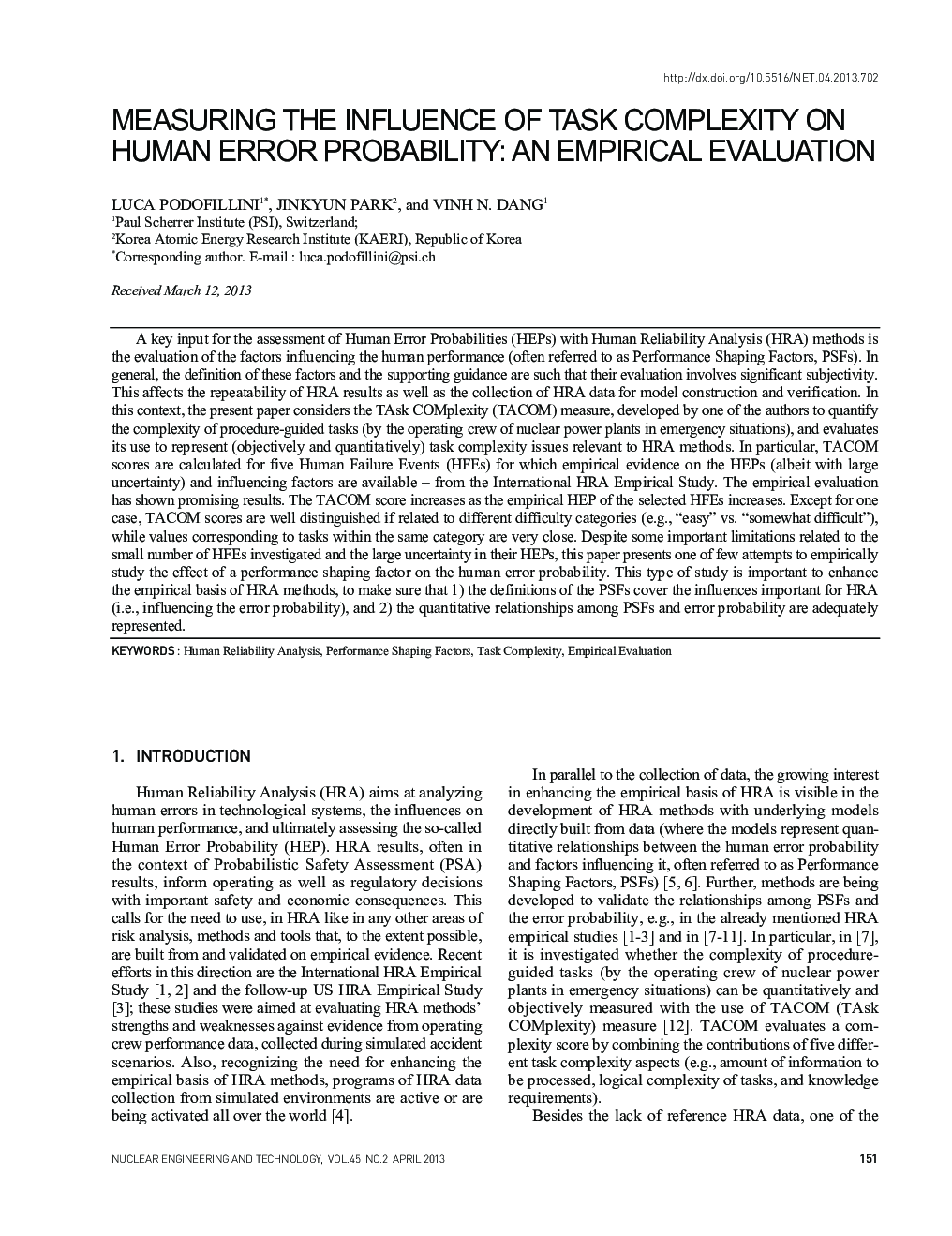| Article ID | Journal | Published Year | Pages | File Type |
|---|---|---|---|---|
| 1739980 | Nuclear Engineering and Technology | 2013 | 14 Pages |
A key input for the assessment of Human Error Probabilities (HEPs) with Human Reliability Analysis (HRA) methods is the evaluation of the factors influencing the human performance (often referred to as Performance Shaping Factors, PSFs). In general, the definition of these factors and the supporting guidance are such that their evaluation involves significant subjectivity. This affects the repeatability of HRA results as well as the collection of HRA data for model construction and verification. In this context, the present paper considers the TAsk COMplexity (TACOM) measure, developed by one of the authors to quantify the complexity of procedure-guided tasks (by the operating crew of nuclear power plants in emergency situations), and evaluates its use to represent (objectively and quantitatively) task complexity issues relevant to HRA methods. In particular, TACOM scores are calculated for five Human Failure Events (HFEs) for which empirical evidence on the HEPs (albeit with large uncertainty) and influencing factors are available – from the International HRA Empirical Study. The empirical evaluation has shown promising results. The TACOM score increases as the empirical HEP of the selected HFEs increases. Except for one case, TACOM scores are well distinguished if related to different difficulty categories (e.g., “easy” vs. “somewhat difficult”), while values corresponding to tasks within the same category are very close. Despite some important limitations related to the small number of HFEs investigated and the large uncertainty in their HEPs, this paper presents one of few attempts to empirically study the effect of a performance shaping factor on the human error probability. This type of study is important to enhance the empirical basis of HRA methods, to make sure that 1) the definitions of the PSFs cover the influences important for HRA (i.e., influencing the error probability), and 2) the quantitative relationships among PSFs and error probability are adequately represented.
